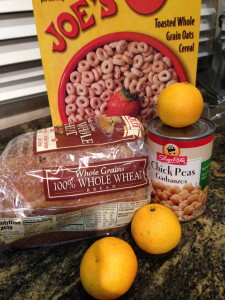Are You Getting Enough Folic Acid?
 This week, January 5th – January 11th, is National Folic Acid Awareness Week. Folic acid is a water-soluble B-vitamin that is necessary for proper cell growth, as it is involved in cell DNA production. The National Council of Folic Acid organizes Folic Acid Awareness Week. The purpose is to educate consumers and health care providers on the importance and need for folic acid. Folic Acid Awareness Week strives to encourage women of child-bearing age to become cognizant of their folic acid intake and to encourage increased intake during this time period.
This week, January 5th – January 11th, is National Folic Acid Awareness Week. Folic acid is a water-soluble B-vitamin that is necessary for proper cell growth, as it is involved in cell DNA production. The National Council of Folic Acid organizes Folic Acid Awareness Week. The purpose is to educate consumers and health care providers on the importance and need for folic acid. Folic Acid Awareness Week strives to encourage women of child-bearing age to become cognizant of their folic acid intake and to encourage increased intake during this time period.
Folic acid is an essential vitamin required to prevent miscarriage and neural tube defects, such as spina bifida and anencephaly. Spina bifida is a condition in which the spine and back of a fetus do not close during development in utero, and results in a protrusion of the spinal cord. Anencephaly is the absence of a large portion of the brain or skull. Due to the frequency of unplanned pregnancies, it is recommended that women of child-bearing age take adequate amounts of folic acid whether they are planning to become pregnant or not.
Since folic acid is a water-soluble vitamin, it passes through the body quickly. Therefore, it is recommended that women take folic acid every day to ensure that it is always available in the body if or when needed. The recommended dietary allowance of folic acid for women is 400 micrograms per day. Meeting the RDA for folic acid has been shown to prevent up to 70% of neural tube defects.
Folic acid is found naturally in some foods, including leafy greens, citrus fruits, legumes and whole grains. Folic acid is so important in the early weeks of pregnancy when women often do not know they are pregnant yet. It is for this reason that the Food and Drug Administration set forth a folic acid fortification regulation in 1996. They decided fortifying food with folic acid would be the most efficient way to reach women of child-bearing age. Folate is the man-made version of folic acid that is found in fortified foods. Foods fortified with folate include breakfast cereals, breads, flours, pastas, cornmeal and white rice. When a food is fortified with folate, its daily value will be listed in the nutrition facts label in the vitamin and mineral section.
While we mainly hear about the benefits of folic acid in pregnancy, there are other benefits to getting adequate amounts of folic acid. Folic acid is used to lower the risk of heart disease and stroke by reducing homocysteine levels in the blood. It is also used for Alzheimer’s, memory loss, age-related hearing loss and preventing age-related macular degeneration. Other benefits of folic acid include treating depression, nerve pain and muscle pain.
As you can see, folic acid is important for anyone, at any age.
Your turn to take action: How will you ensure you’re meeting your folic acid recommendations this week?


Leave a Reply
Want to join the discussion?Feel free to contribute!